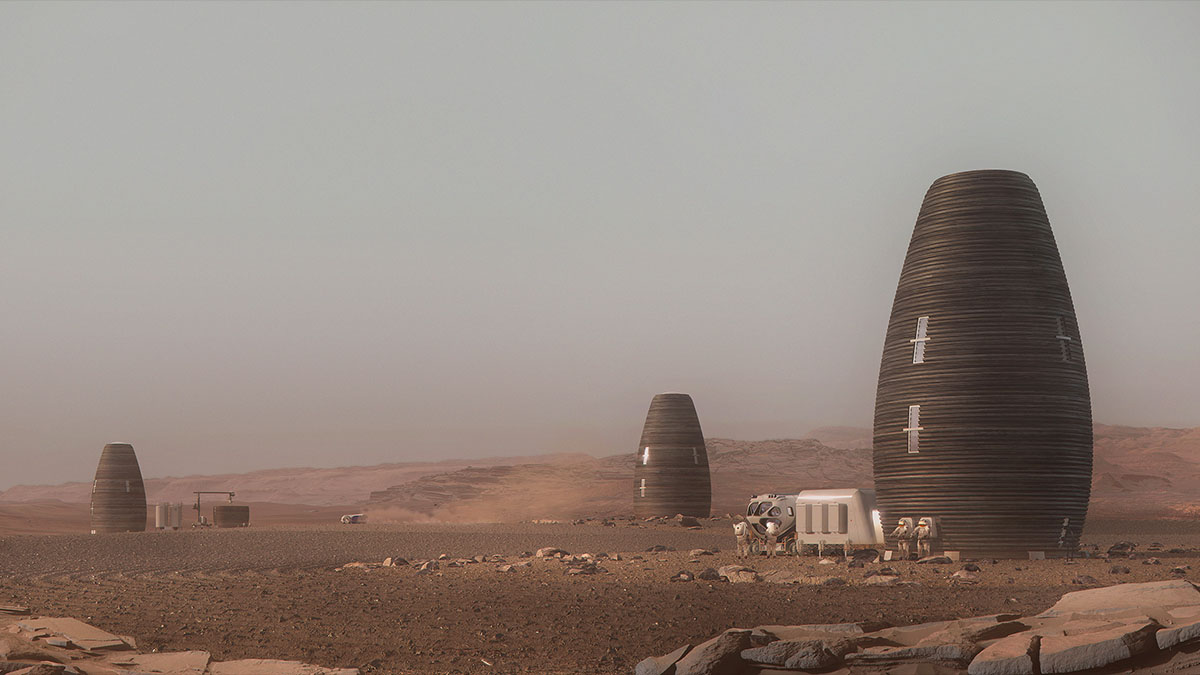starcrete, or how to live on other planets with simple cooking ingredients

According to sci-fi movies on which humans visit planets where the atmosphere isn’t nearly as conveniently breathable as those in the Star Wars or Star Trek universes, there are usually three options for habitation. Massive glass domes, a collection of sleek, atompunk spires, or bunkers. As we discussed previously, the reality will be very different. Our cities on the Moon, Mars, and beyond, are almost certain to resemble enormous termite mounds printed by robots either in a series of missions, or over the massive hull of a settlement ship.
But hold on a minute, you might be saying. It can’t be that easy to just land on another world, whip out a massive robot, and start 3D printing a new settlement, could it? Well, a team from the University of Manchester tried something similar in a lab and found that it is, indeed, that simple, and the results are actually more impressive than our current construction material. All you need is some potato starch, salt, and regolith, or extremely dry, windswept dirt similar to volcanic ash on Earth.
Mix the starch and regolith, add salt to set and dehydrate, and you get StarCrete, concrete twice as strong as what we use for our own buildings. Typical concrete can withstand 32 megapascals, or 320 times the atmospheric pressure at sea level. Concrete mixed with Martian regolith could handle slightly over 72 Mpa, and lunar regolith withstood just about 92 Mpa, the equivalent of diving nine kilometers down to the bottom of the ocean and nearly as much as the pressure in the Mariana trench.
Of course, there’s a bit of a catch. Concrete can resist enormous compressive forces, but it’s not so great at dealing with lateral ones, so one would imagine skeletal wireframes made of carbon and lightweight alloys rising into the sky on alien worlds so robots could pour StarCrete around them, creating entire cities capable of withstanding the harsh elements. Likewise, it’s very likely that a constantly topped off layer of water ice or just water would be a must inside these walls to shield the occupants from higher than acceptable radiation.
Given that StarCrete closely resembles the color and texture of the regolith from which it was created, the end result would look as if even the newest settlement was a primeval complex, every bit as old as the terrain around it and meant to house hive insects rather than bipedal alien invaders and their sophisticated machinery. And really, wouldn’t that kind of outpost be way more badass than a metal honeycomb parfait with random patches of greenery under a sterile dome?
See: Roberts, Aled D. and Scrutton, Nigel S. (2023) StarCrete: A starch-based biocomposite for off-world construction. Open Engineering, vol. 13, no. 1, DOI: 10.1515/eng-2022-0390





